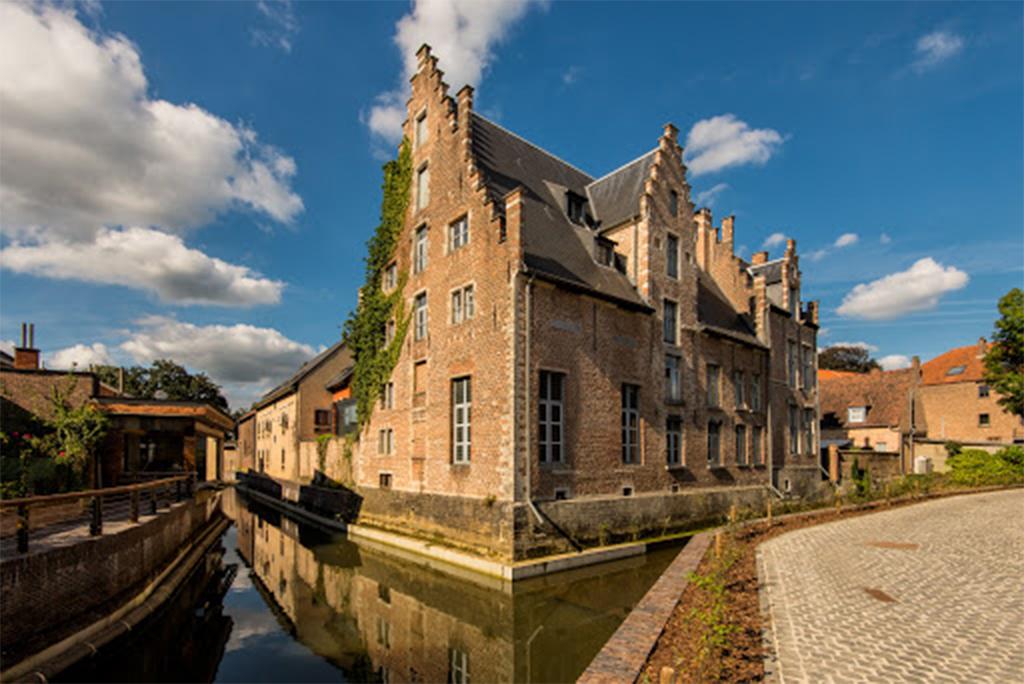
Diest is one of those small towns that you pass by on the way to somewhere else.But don’t pass it by! Stop off and enjoy some quality time in this lovely market town, as it has so much to offer. It has an interesting museum, and one of the largest and best conserved Beguinages in Europe
Location:
Address To reach the Town :Grote Markt 1, 3290 Diest
“Diest is an incredible place in the heart of Belgium. It is an astonishing mixture of patrons of past and changes of modernity. Diest is popularly known as “the Orange city” of Belgium.
It is a city and municipality located in the Belgian province of Flemish Brabant. Situated in the northeast of the Hageland region, Diest neighbours the provinces of Antwerp to its North, and Limburg to the East and is situated around 60 km from Brussels.
Destinations in Diest:
The Halve Maan Provincial Domain in Diest is a recreation and nature park on the east side of the city. In addition to an outdoor swimming pool, it has playgrounds, a rowing pond, an adventure zone and a diverse natural garden. Access to the nature garden is free of charge every day until an hour before sunset.
This provincial place is very versatile, there are many fun activities that can be done by children and adults.
Kayak (30-minute rental)
Paddle boat (30-minute rental)
Minigolf
Miniature cars
Climbing wall
Fishing
Bicycle rental
The Sint-Sulpitiuskerk in Diest is a Gothic parish church on the Grote Markt,
The church houses some very interesting art treasures, such as a baroque pulpit, a late gothic triumphal cross above the choir entrance, a choir stalls with unique carvings (misericordiae), an authentic renaissance tabernacle, 16th century window with stained glass, … The main altar houses the Museum of Religious Art with the grave of Philip William of Orange-Nassau, Lord of Diest and eldest son of William the Silent.
The St. Sulpitius Church has a rich and valuable art collection.
The citadel of Diest was built in the first half of the 19th century. When Belgium separated from the Netherlands in 1830, the citadel was built as a defense mechanism for this new state. It was built to prevent the enemy from advancing to the capital, Brussels , in the event of an attack .The citadel is located on the hills on the Demer . The structure has the shape of a pentagonal star. The citadel has been very well preserved and is the only preserved specimen in Flanders .
The citadel path is now used as a cycling track.
- St-Katharinabegijnhof
Centred on a 14th-century church and sporting a few artists’ studio-galleries, this picturesque village-within-a-village is a five-street grid of lovely antique houses retaining an unusually authentic aura. The site is entered through a splendid baroque portal at the eastern
end of Begijnenstraat. They allows visitors to wander around the herb garden.
This intimate, tranquil and well laid-out museum is housed in the medieval cellars beneath the Town Hall. Its seven rooms present the rich history of the “Orange City” (named after Diest’s links with the House of Orange-Nassau). The Treasure Room, with its ornamental liturgical silverwork (above) and its exquisite “enclosed gardens” of assemblage art (below). These are from the 16th century and are made from various materials: textile, wood, alabaster, glass, gypsum. They frequently contain relics. The museum is like a cultural centre for Diest and Belgians.
- Don’t Diet in Diest!
There are plenty of places to eat in Diest. Wannes Raps is Named after a novel by Flemish author Ernest Claes, it’s actually the #1 restaurant in Diest and it’s well worth its high rating. The staff are friendly, the chef serves the main meal himself, and the food is fresh, tasty and surprisingly good value.
Bijenhofof has grown, from a family business, into one of the key players in the world of the bee-keeping, i.e. the world of the honeybees which the bee-keeper is passionate about.Bijenhof engages in the worldwide import and export of several kinds of delicious honey, royal jelly and beeswax. The honey is processed to meet the needs of our own dealer network or as specified by third parties. This takes place at Bijenhof under strict supervision, with rigid adherence to the toughest food safety standards.
Days will always be lesser in Diest.

